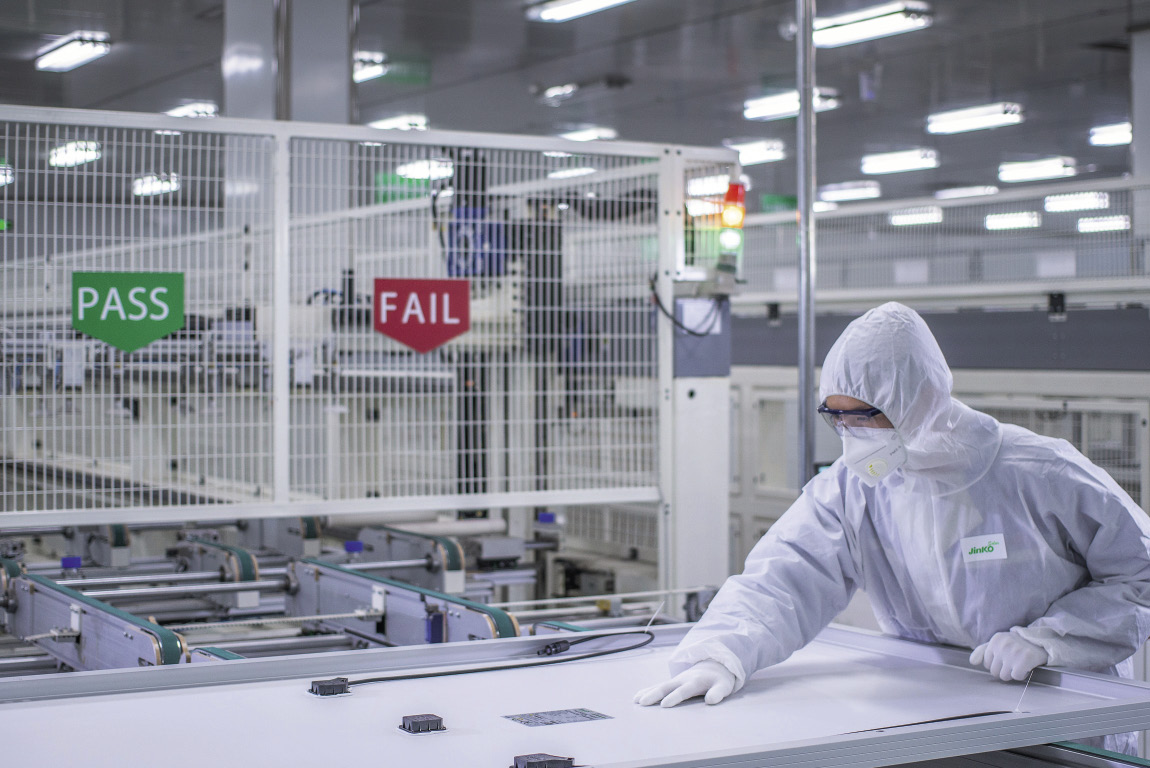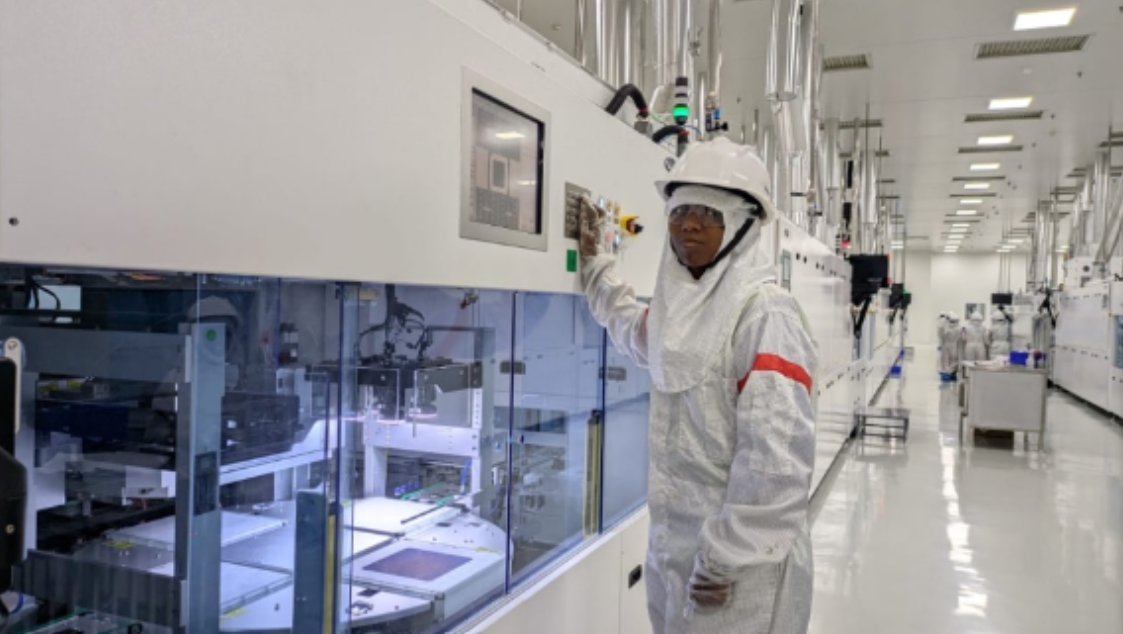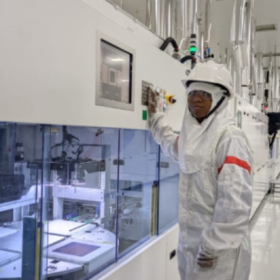From pv magazine 09/2020
A new draft policy setting technological baselines for China’s cell and module makers was released two months ago and may redraw the competitive landscape. The Standard Conditions for Photovoltaic Manufacturing Industry (2020 version) was drafted by the Ministry of Industry and Information Technology (MIIT), to replace the previous version from 2018. The draft is currently open for stakeholder consultation, and it proposes raising the efficiency bar significantly.
On the whole, the document seeks to set out the conditions under which new investment into China’s PV cell and module manufacturing can be made – in a way that officials believe is of benefit to the industry. This includes the level of investment, in which geographic areas the development of facilities should take place, and total production capacity.
However, the proposed conversion efficiencies stipulated for monocrystalline solar cells and modules have sparked considerable discussion. In the proposed regulation, the baseline cell efficiency for new monocrystalline production lines should increase to 23%, from 21% under the 2018 iteration. All operational mono cell lines will be required to meet a new standard of 22.5% in future, compared to 19.5% today. For mono modules, conversion efficiencies of 20% for new facilities and 19.6% for existing lines will be required, representing a sharp increase from 17.8% and 16.5% respectively.
Tough targets
“This is too aggressive and hard to achieve for many PV cell and module manufacturers, especially for those tier-2 and tier-3 firms,” said Li Liang, a senior research scientist at a top-ranked solar PV cell and module manufacturer. According to Li, the mainstream conversion rates of solar cells with mono p-type PERC among leading firms are usually between 22.7% and 23.1%. Few companies can reach a stable rate of more than 23%, and even among this illustrious group, a standard rate of 22.5% is more common.
The ambition of the new MIIT baselines is evident in the fact that even the world-record mono PERC cell efficiency of 24.06%, announced early this year by Longi, was achieved with a laboratory cell, far from mass production. “This update will mean all new monocrystalline capacities have to shift to new cell technology like heterojunction (HJT), TOPCon or Interdigitated Back Contact (IBC) cells, and the current PERC investment will likely be terminated,” explained Li.
As the top administrative body for guiding and regulating China’s technology-related manufacturing industry, MIIT plays a powerful role. It specifies a range of industrial standards and informs the issuing of permits, which are required for a new production facility to be developed. Most state-owned enterprises like China’s two gridcos and five national energy groups will take the MIIT “guidelines” as a fundamental requirement when selecting suppliers. Manufacturers that do not clear the MIIT bar will likely find China’s vast domestic PV market closed to them.
Considering the limits to the current generation of PERC technology, the new standard will likely act as a brake to capacity expansions on both the cell and module level. It could very well force all investment in new production capacity towards what can be classed as advanced cell technologies beyond PERC. However, the existing barriers to the uptake of these technologies, including high equipment costs and low yield due to complex processes, could prevent large-scale investment in these technologies. An overall sharp decline in new capacity investment could be a consequence of the new MIIT regime. But that begs the question – was this in fact one of the purposes of the proposed regulation?
P-type expansions
The entire PV industry has witnessed an investment frenzy in the first half of 2020 in terms of new cell and module capacity. Official announcements from Chinese PV manufacturers reveal a total investment of over CNY 120 billion ($17 billion) has been committed to capacity increases over the first six months of 2020 alone. This level of investment is unprecedented and represents over 111 GW of cell capacity, and close to 104 GW of modules.
All major PV cell and module makers have participated in this rapid expansion game, with the expansions themselves now frequently coming in 10 GW increments – a scale that would have been unimaginable just a few years ago. The biggest monocrystalline wafer maker Longi is set to provide much of the feedstock to the cell and module makers, and estimates that its wafer capacity will stand at 75 GW by the end of 2020 – an 80% expansion year on year. Alongside Longi, which is also expanding cell and module capacity, Tongwei, Risen, JA Solar, Aiko Solar, Jinko, Trina, GCL, Talesun, and Jolywood are just some of the familiar names that have committed to rapid expansions.
While there is variation among these expansion plans in terms of technology and timing, one common feature is that the vast majority are based on p-type PERC – which has been the most mature and profitable technology in recent years. There is less than 10 GW of advanced cells with next-generation technologies such as HJT, TOPCon, and IBC.
With so much new mono-PERC capacity coming online, it is conceivable that it would result in intense competition on costs, which it appears the Chinese government is attempting to avoid. This may be why the proposed cell efficiency baseline of 23% is approaching the ceiling of what can be achieved by p-PERC – the shadow of the visible hand.
The visible hand approach to PV industry development in China has had considerable success – and has defined many aspects of market development. Utilizing several large-scale national subsidy schemes, including the Golden Sun Project, Top Runner Program, and the Photovoltaic Poverty Alleviation Plan, advanced technologies were incentivized – resulting in cost reductions through experience and scale. And in line with the expansion of domestic PV installations, the entire solar PV industry in China was successfully manoeuvred to the leading position it now enjoys.
The new MIIT baselines may have a similar impact. “The government wants to pause or even stop investment in PERC because there is no potential on conversion capability of this technology,” said Li. As a cell scientist, he agrees with this intention, but feels the shift comes too fast. “I thought that PERC would last another three years or more, because equipment for new technologies is still too expensive and leads to unacceptably high costs.”
But the technology improvement and cost reductions seem to be moving faster than many had imagined. The latest news from the SNEC expo and conference 2020 in Shanghai in August shows that with the breakthrough of PECVD (Plasma Enhanced Chemical Vapor Deposition), a core piece of equipment for HJT cell production, the investment cost for a 1 GW line has come down to CNY 500 million or less – a 50% reduction compared to only one year ago. Compared with CNY 300 million/GW of PERC cell lines, the dawn of HJT and other advanced cell technologies could be occurring. And the new standard may be what pushes it above the horizon.
This content is protected by copyright and may not be reused. If you want to cooperate with us and would like to reuse some of our content, please contact: editors@pv-magazine.com.








2 comments
By submitting this form you agree to pv magazine using your data for the purposes of publishing your comment.
Your personal data will only be disclosed or otherwise transmitted to third parties for the purposes of spam filtering or if this is necessary for technical maintenance of the website. Any other transfer to third parties will not take place unless this is justified on the basis of applicable data protection regulations or if pv magazine is legally obliged to do so.
You may revoke this consent at any time with effect for the future, in which case your personal data will be deleted immediately. Otherwise, your data will be deleted if pv magazine has processed your request or the purpose of data storage is fulfilled.
Further information on data privacy can be found in our Data Protection Policy.